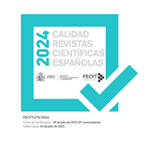How do students write in engineering and the humanities? Intertextuality and metadiscourse in undergraduate dissertations written in Spanish
Resumen
This article aims to contrast metadiscourse and intertextuality in 40 undergraduate dissertations written in Spanish in engineering and the humanities at a Chilean university. Results show that guidance on dissertations’ goals and stages is common across disciplines, especially in introductions, although engineering signals goals more often. All students graduate statements, especially in conclusions, but the frequency of graduation doubles in the humanities. Humanities students prefer hedging over boosting, while boosting is more common in engineering. Self-mentions, especially plural authorial, are frequent in the humanities but do not occur in engineering. Citations are five times more frequent and usually integral in the humanities, while engineering only uses non-integral citations. Indirect speech predominates across disciplines, but direct and mixed speech are also relatively common in the humanities. This study can help to understand undergraduate students’ authorial voices written in Spanish, depict discipline-specific writing choices, and supply data for writing instruction initiatives.
Descargas
Descarga artículo
Licencia
La revista Círculo de Lingüística Aplicada a la Comunicación, para fomentar el intercambio global del conocimiento, facilita el acceso sin restricciones a sus contenidos desde el momento de su publicación en la presente edición electrónica, y por eso es una revista de acceso abierto. Los originales publicados en esta revista son propiedad de la Universidad Complutense de Madrid y es obligatorio citar su procedencia en cualquier reproducción total o parcial. Todos los contenidos se distribuyen bajo una licencia de uso y distribución Creative Commons Reconocimiento 4.0 (CC BY 4.0). Esta circunstancia ha de hacerse constar expresamente de esta forma cuando sea necesario. Puede consultar la versión informativa y el texto legal de la licencia.











